So far I have only worked with data from the individual races, but I wanted to familiarize myself more with the relay data. So I took yesterday’s crazy women’s race and did some research on their relay.
Progression of the race by rank
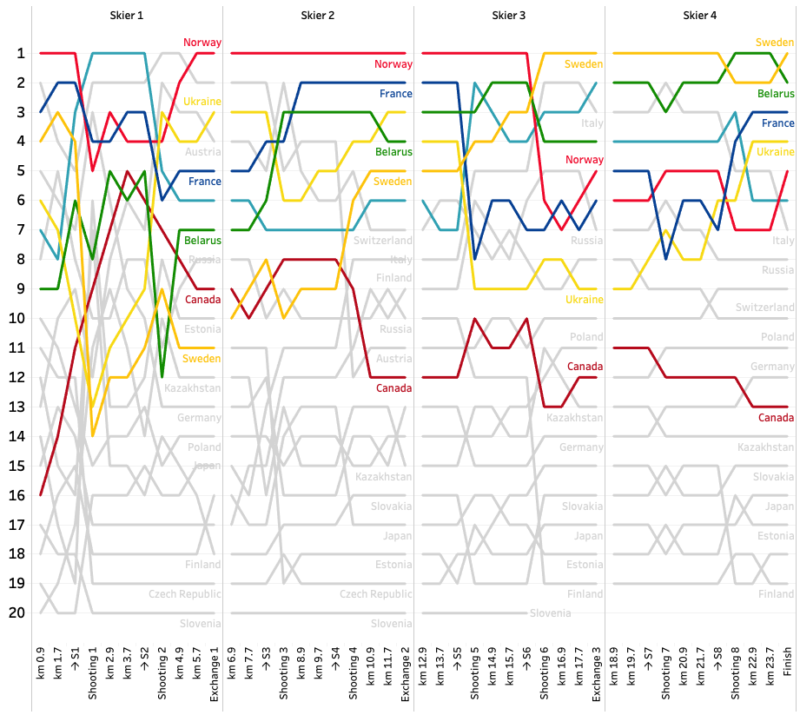
Team average skiing and shooting times
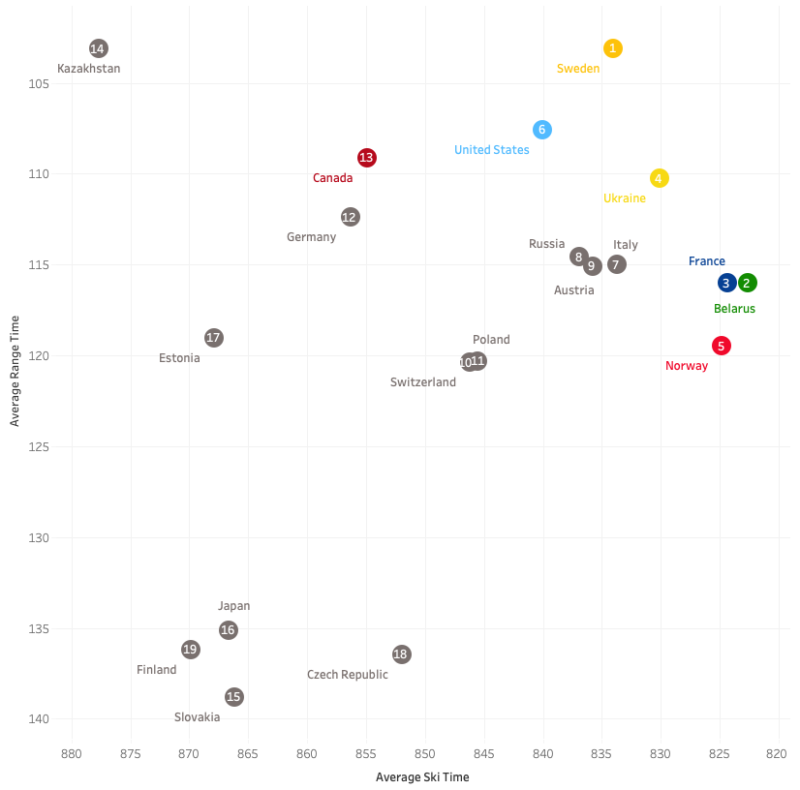 Note: the axis are reversed, so top right is good, bottom left not so good
Note: the axis are reversed, so top right is good, bottom left not so good
Noticeable is Kazakhstan, not one of the most prominent countries in biathlon at this point, who ranked second in fastest Average Range Time. Not let’s see how their (and other countries’) shooting went:
Shooting
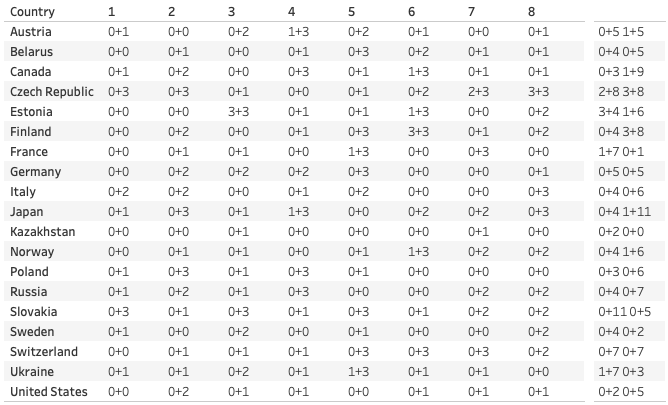
With only two reloads, it is no wonder Kazakhstan had a very good Range Time. Czech Republic had a horrible day at the range with 5 penalty loops and 16 reloads. Sweden, the eventual winner, had 6 reloads.
When we look at the combined efforts of all team members per team, we can see what the spread was within the teams. The closer they were, the more consistent they raced as a team. The following chart has four columns per team: the total leg time per athlete per team, also showing the team’s spread; the average leg time for the team; the spread expressed in Standard Deviation; and the average range time per team:
Spread within team
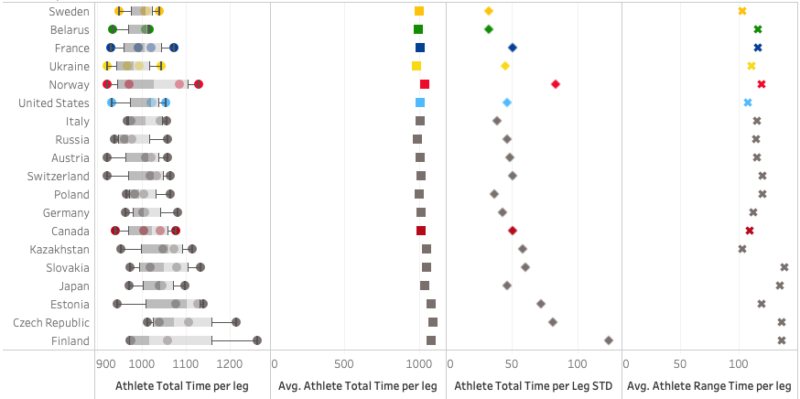
This shows that Sweden and Belarus were very consistent as a team, as were Germany, Poland and Japan for example. On the other hand Norway had some great performances, but also some weak ones, not very consistent. Finland had the biggest spread.
If we start digging one layer deeper, let’s look at the Top 5, Canada and USA and who their best performers were, based on total course time per leg (coloured bars) and their three course-laps course times (dots: light blue is course 1, dark blue is course 3). The athletes are sorted within their teams based on the best total course times:
Teams’ best performers
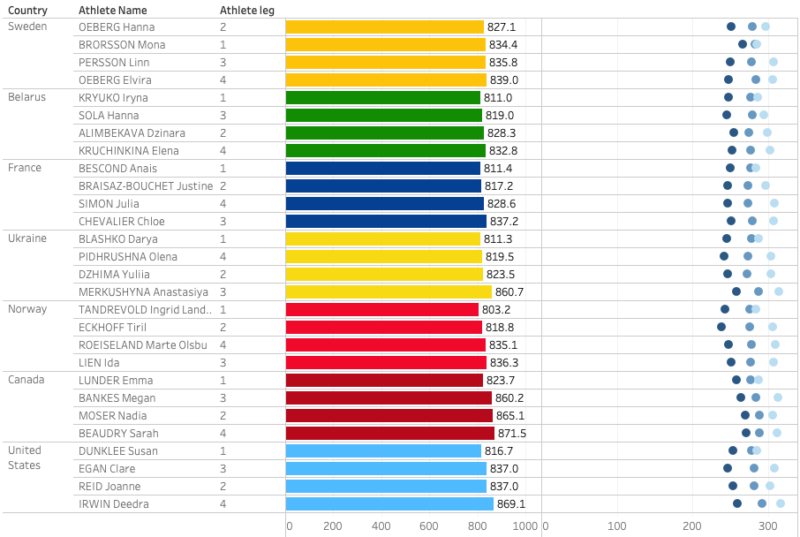
The chart above also shows how consistent their three-course times were; the closer together, the more consistent. I all cases the third course was the fastest, which makes sense as they have done their shooting by then and can go all-out. The following shows, again for only the Top 5, Canada and USA, the right column from above in more detail and has ordered by athletes with the fastest course time (in every case their third):
Fastest course times
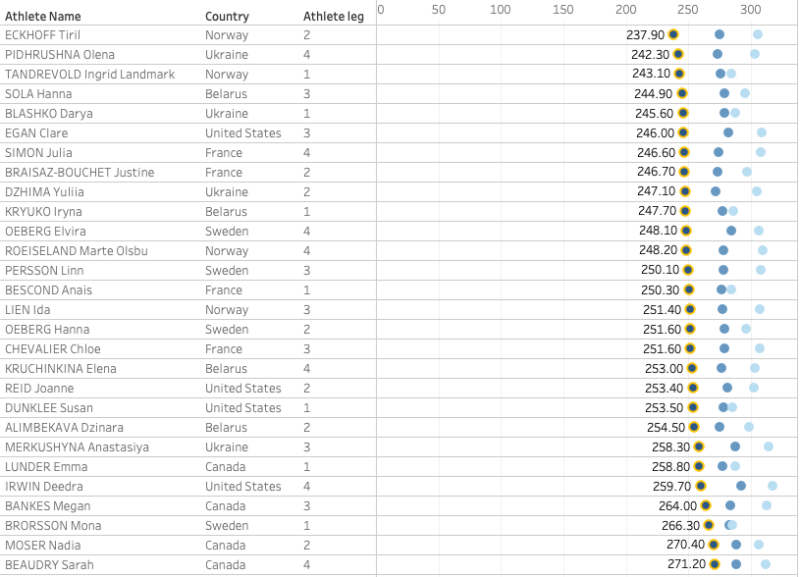
Not shockingly, Tiril Eckhoff had the fastest course time in her third course. Tandrevold was third, but Roeiseland and Lien were 12th and 15th.
Lastly, we can look at individual performances. I recommend going to the interactive version of the report, and when hovering your mouse over the name of a column, you can click the sort ascending or descending button to see who’s best, and who is not. Below I show the Top 15 athletes per measurement:
Individual performances
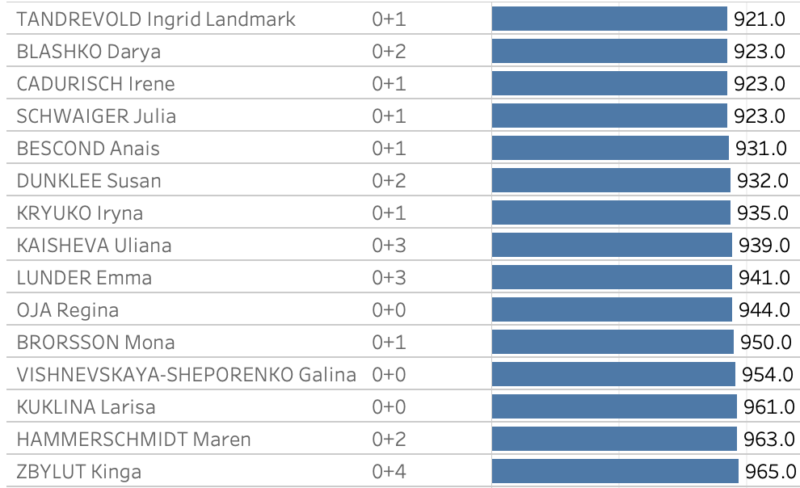 Best total time per leg (three loops, skiing and shooting)
Best total time per leg (three loops, skiing and shooting)
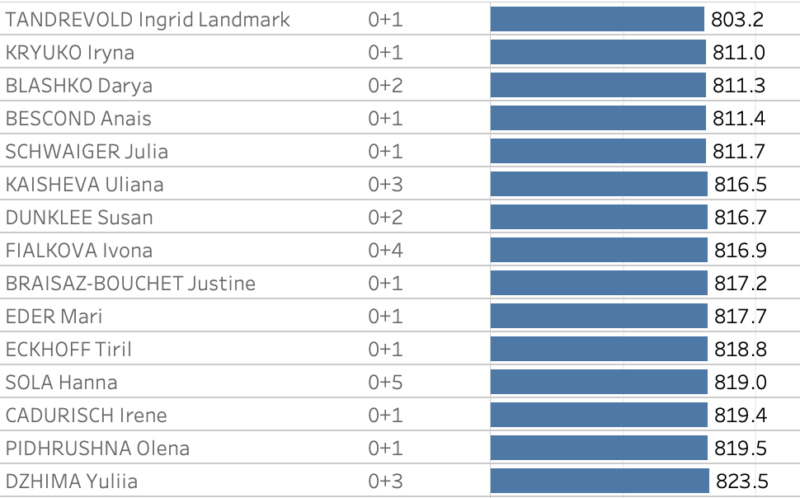 Best total skiing time per leg (three loops, skiing only)
Best total skiing time per leg (three loops, skiing only)
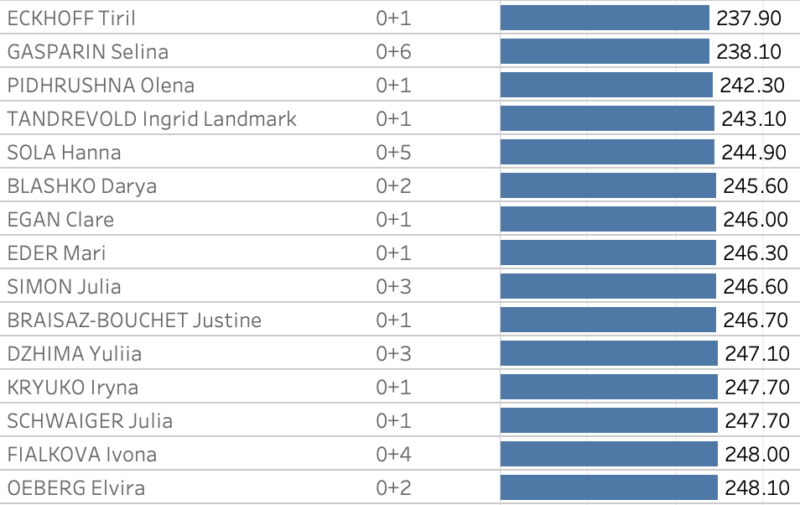 Best time of fastest course time (one course, skiing only)
Best time of fastest course time (one course, skiing only)
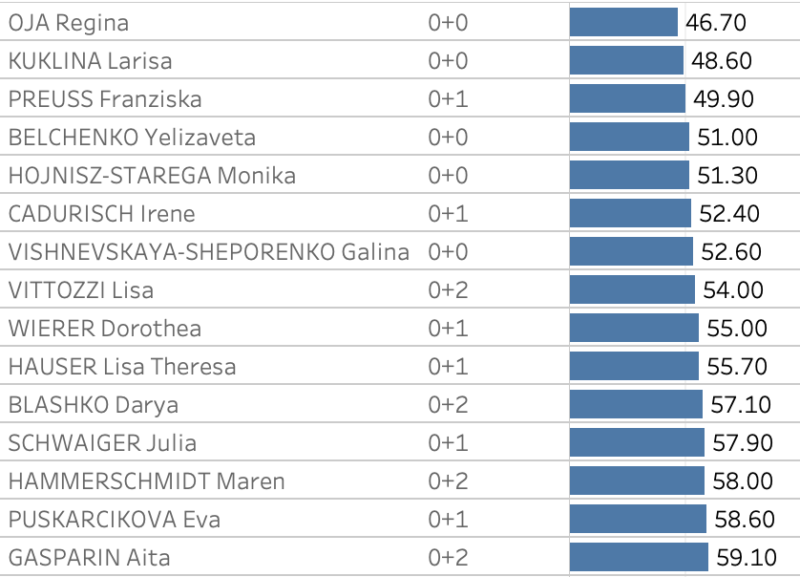 Best time for total shooting time per leg (two shootings)
Best time for total shooting time per leg (two shootings)
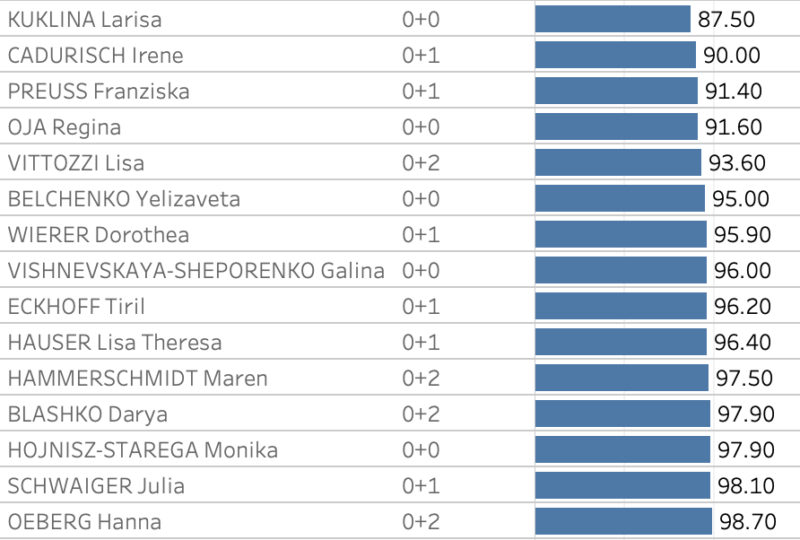 Best time for total range time per leg (two shootings)
Best time for total range time per leg (two shootings)
This concludes my examination for now, but now that I am more familiar with the relay data, I’m sure you’ll find more research and postings about relays in the future. Cheers!
About Post Author
Proud dad&husband; analyst & visualization specialist (Tableau, SQL & R); creator of Biathlon Analytics; blog poster on realbiathlon.com; passionate about biathlon, cross country skiing and canoeing